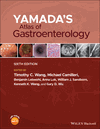Endoscopic diagnosis and treatment of nonvariceal upper gastrointestinal hemorrhage
Summary
This chapter offers diverse images that provide an overview on the endoscopic diagnosis and treatment of nonvariceal upper gastrointestinal hemorrhage and aims to provide a synopsis through pictures and illustrations rather than through text. Upper gastrointestinal (UGI) bleeding from peptic ulcer disease and other nonvariceal causes is a frequent cause of hospitalization (250 000–300 000 hospital admissions per year in the United States). Initial treatment should focus on vigorous volume resuscitation. A combination of clinical characteristics and endoscopic findings can predict the risk for rebleeding and mortality. Endoscopic therapy is indicated for all lesions considered to have a high risk of rebleeding (active bleeding or visible vessel).



